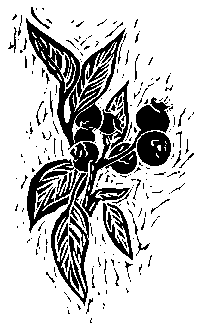Dan Hinkley in China (and Massachusetts)
In photographs, Dan Hinkley, co-owner of Heronswood Nursery on the Kitsap Peninsula in Washington Sate, looks a bit the mountain man. It might be the angle, but he seems the renowned plant explorer in suspenders one might conjure up, readily leaping over tigers to grab that rarest of epimediums. So I was unprepared on a snowy Sunday in February for the gentle-looking man in the corduroy jacket patched (deliberately) at the elbows to lecture in Great Barrington, Massachusetts, to an enraptured audience of 500 gardeners, all longing for spring.
He is slighter than in the imagination, with a closely cropped beard and a calm demeanor. I was able to snag a half hour with him before his slide lecture began. His face reveals delightful laugh lines, and he doesn’t collect plants after all – he just borrows a little seed.
Hinkley was on tour around New England promoting his newest book, The Explorer’s Garden: Rare and Unusual Perennials (Timber Press, 1999). The book is delightfully written, beautifully illustrated with photographs by Hinkley and an associate, Lynne Harrison, and teases with chapter headings such as: “The Ubiquitous Umbellifers” and Berberidaceous Botony.” Hinkley is a passionate man, and his passions are these plants he has propagated from his forays into wild terrain where the cottage gardener would fear to tread.
Later, during his talk, at each click of the slide projector, the audience would quietly gasp at the stunningly beautiful plants on the screen.
I asked him about his collecting trips to China – he’s explored there twice, in 1996 and 1998 – and especially about Tiger Leaping Gorge in Yunnan Province. Hinkley has stayed in the nearby village and collected seed around the chasm itself. A trip is planned to explore the gorge, the world’s deepest canyon, set at an altitude of 1,550 miles (its southern wall rises another 3 kilometers) above the rapids of the Yangtze River.
Tiger Leaping Gorge is between Dali, in northwestern Yunnan Province, and Zhongdian, in Tibet, still a geologically active region of “thin pasture, alpine lakes and chattered peaks painted crisply in blue, white and gray,” according to The Rough Guide to China. Dali, says Hinkley, has become the Katmandu of China, attracting young Westerners by the hordes.
But the little village outside Tiger Leaping Gorge – it got its name because it is so narrow in places that legend has it that a tiger once leaped over it – is where Hinkley and his entourage dug in and called home. Their hotel – “a negative two star accommodation,” he teases – was called Stay Put Up. The sanitary facilities were outdoors and emptied into pig troughs. “Unfortunately, we often saw the piles of rice that would become our meal outside, between the loo and the kitchen,” Hinkley says, almost relishing the memory. “But believe it or not, we ate sensational fresh food in China, there were the oddball dishes, like queen wasp larvae, a seasonal specialty. We had them stir-fried. I ate them in Vietnam, too.”
A day collecting seed would begin early. There were eight others in his party, including the writer Jamaica Kincaid. They would be on the road by 7:30, arrive at a collecting site at 9 or 10, and then “scatter like ladybugs escaping from a jar.” they worked until late afternoon. Hinkley prefers to collect by himself. “I’m totally focused on the plants, ” he says. “But it is nice to come back at the end of the day and share experiences.”
I asked him about Salvia yunnanensis, which is described in the Heronswood Nursery Ltd. catalogue for this year as “second-generation seedlings from my original collections above Tiger Leaping Gorge in Yunnan Province with erect stems to 2 ft. carrying pretty medium purple, tubular flowers…”

Hinkley doesn’t collect plants after all –
he just borrows a little seed.
“There are a tremendous number of salvias,” Hinkley says, “and many of them are species. There is so much to learn about Chinese salvias. The taxonomy is very confusing.”
But then it was time for the lecture to begin. The lovers of rare and unusual perennials were hungry for color, and for tales of Arisaema candidissimum, with its enormous trifoliate leaves. Hinkley writes: “The very distinctive inflorescence possesses a spathe of precious light pink and white striping…” Read about them in The Explorer’s Garden, Chapter 24, “Enchanting Jacks: Arisaema and Pinellia.” Who cares if they hardy only to Zone 7?
– Paula Panich
